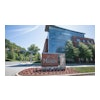Days after the U.S. Supreme Court heard a case on English Language Learner (ELL) policy that pit limited-government proponents in Arizona against advocates of bilingual education, researchers, policymakers and education practitioners unveiled Friday some of the best ways to narrow the achievement gap among ELL and other underserved groups during a policy breakfast series at New York University.
Hosted by the NYU Steinhardt School of Culture, Education, and Human Development, the third session of “Closing the Achievement Gap: Facing the Challenges from Outside the Classroom” zeroed in on three innovative and promising programs.
At one program, Internationals Network for Public Schools, the graduation rate for ELL students is 65 percent for four-year graduates, as compared to 23.5 percent for ELL students in the New York City public school system, said Dr. Claire E. Sylvan, founding executive director and president of INPS, a nonprofit that supports high schools with late-entry immigrant groups.
“It’s not a question of separating language from content and leveling students,” said Sylvan, underscoring that, when dealing with ELL students, teachers must teach both a subject and a language. Sylvan emphasized that ELL students should not be separated from the rest of the class and should be engaged, regardless of English proficiency level.
Teaching ELL students in subject-area classes can be done, she said, by doing more hands-on projects in the classroom and requiring apprenticeships. “The model for adult learning and the model for student learning mirror each other,” she added.
Inaugurated in the 1990s, there are now 10 INPS schools in New York City and one in Oakland, Calif., and another will be opening in San Francisco in August. What differentiates these schools – which some audience members said seemed like independent or charter schools – is that they offer ELL students a close-knit, supportive environment with rigorous academic standards. Since about 70 percent of the students at INPS schools have been separated from one or both parents in their lifetime and 30 percent are undocumented, Sylvan said creating a supportive, family-like environment is crucial to serving this group of students.
Dr. Glynda Hull, a
© Copyright 2005 by DiverseEducation.com


















